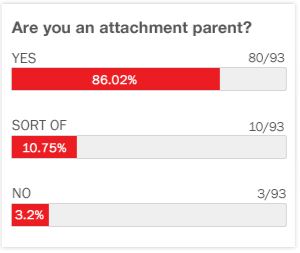
You’ve got the schedule down. Baby is FINALLY sleeping more…and then, WHAM! Suddenly she’s not. Welcome to what is commonly referred to as the 4 month sleep regression. Some may refer to this phase as increased wakefulness, but it all amounts to the same thing: you and baby have newly found your groove, and now baby just isn’t acting like herself.
This (very common) sleep regression is characterized by a distinct change in your baby’s behavior. Some indicators that you’re experiencing the 4 month sleep regression (other than the fact that your baby is 4 months old) are:
• Increased fussiness;
• Multiple night wakings (especially if your baby has just begun to sleep longer stretches during the night);
• Reduced naps or “disaster naps”; and
• Changes in appetite.
4 Month Sleep Regression
In other words, your baby’s sleep schedule just turned on its head. The good news? This probably means that your baby is growing. According to research done by Rijt and Plooij, authors of Wonder Weeks, your baby is becoming more engaged in the world around him. As your baby realizes that he can interact with his world, he also begins to realize that his actions affect others, and that he has a bit more control of his surroundings.
More commonly, this sleep regression is associated with growth spurts. You may notice that your baby has outgrown his current wardrobe, or has begun to increase his mobility (it’s not uncommon for babies to learn to roll over during this time). Parents often can’t figure out why their sweet baby is suddenly a sleep deprived, fussy, cranky, overtired baby overnight. They begin to question if it could be an ear infection, teething, lack of supply (for breastfeeding moms), or maybe he’s got reflux…the list goes on. What parents don’t often realize is that around this time your baby’s sleep rhythms have also changed (just to throw more into the mix of their little world changing).
Infant Sleep Patterns
As an infant, your baby probably slept just fine anywhere and everywhere. This is because while an infant does cycle through sleep, there aren’t distinct sleep stages like an older baby or adult may experience. According to Dr. Richard Ferber, newborn babies spend much of their sleeping hours in deep, restorative sleep, which is why once your little one dozes off, it’s difficult to wake them until they’re ready to be changed or fed again.
4 Month Old Sleep
Now that your baby is older, she is beginning to enter the adult world of sleep, which means that she will be cycling in and out of very distinct stages: deep sleep and active sleep, just like you. The problem is that your baby doesn’t know how to deal with this new sleep cycle. If you’re rocking or feeding your baby to sleep, you may find that it takes a full thirty minutes for them to be fully asleep, only to have your baby wake fussy less than fifteen minutes later. This is because your baby has a startle reflex when they enter active sleep, and it often wakes them up. If they don’t know how to get back to sleep, they look for the person who can help: mom or dad. As if that wasn’t stressful enough for you, your baby actually does most of her deep sleep at the beginning of the night. So while she may go to sleep for about five hours (interestingly, that is the technical definition of sleeping through the night at this stage, but many 4 month olds are capable of sleeping longer), she will begin to wake at regular intervals later in the night. This is where it gets challenging. Your baby is growing, the world is becoming far more interesting for them, and they have to learn to fall asleep on their own. No wonder your baby is cranky! If you’ve experienced this phase, you aren’t alone. This sleep regression should only last between two and four weeks. Any longer than that, and you have created a new schedule (and not one that you’ll want to keep).
7 Tips to Help You Through the 4 Month Sleep Regression
1. Do what works. Remember, a lot is changing for your baby, so try to ‘go with the flow’, at least for now.
2. Watch for your baby’s sleepy cues, and try to respond to them quickly.
3. Once your baby’s fussiness begins to calm down, consider introducing ‘drowsy but awake’ at bedtime. This will encourage and help him learn to put himself to sleep. Stay by her side and offer physical and verbal reassurance. If she does nothing but cry for 15 minutes despite your soothing help, pick her up and rock, hold or fed her to sleep and try again the next night or whenever you both feel up to it.
4. Be wary of creating a new sleep crutch. Go ahead and keep whatever crutch is working, but try not to lengthen the list.
5. Offer LOTS of additional snuggles and reassurance.
6. Watch for signs of growth. Yes, this is a trying time, but you’ll be amazed at all of the new discoveries that your baby will make during these weeks.
7. Follow your flexible schedule as much as possible. Babies thrive on consistency and routine, so be sure to provide it. And remember, this sleep regression is actually a good thing. Your baby is growing and changing. And it’s temporary; your baby will return to her longer stretches of sleep at night again. If your baby isn’t back to her sweet self in a few weeks, please consider contacting her doctor to see if there may be an underlying medical issue.
Reprinted with the author's permission from: http://www.sleeplady.com/baby-sleep/4-month-sleep-regression/










